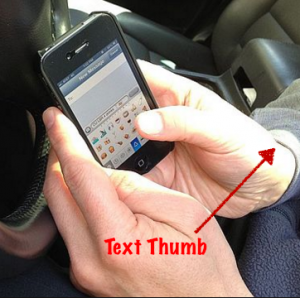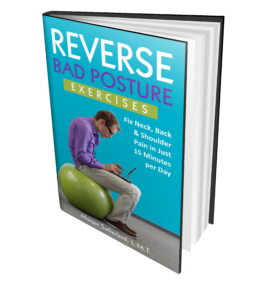Avoid These 4 Common Smartphone Syndrome Injuries
Smartphone syndrome injuries are more common than you might think. With smartphone use dominating modern life, it’s no surprise that these tiny devices are causing big physical problems. Everywhere you look, someone is hunched over their phone—chances are, you might even be reading this on your smartphone right now!
There’s a price we all pay for using our phones incessantly. In this post, I’ll run through 4 common smartphone syndrome injuries, and don’t worry, I’ll also give you some tips to help correct them. You won’t be left hanging.
1. Golfer’s Elbow

Golfer’s Elbow, or medial epicondylitis, refers to inflammation or degeneration of the flexor tendons in the forearm, leading to tight, painful muscles.
And no, you don’t need to be hitting the green with Tiger Woods to suffer from Golfer’s Elbow. Overuse is the primary cause. Gripping your smartphone for extended periods, swiping through apps, or using your phone like a stress ball can irritate the tendons and associated muscles. The strain from these repetitive movements can trigger this condition.
Tip: Consider using a bluetooth headset to give your hands and elbows a break from constant gripping.
2. Tennis Elbow
Tennis Elbow, or lateral epicondylitis, is another overuse injury similar to Golfer’s Elbow but affects the extensor tendons of the forearm.
Like its counterpart, Tennis Elbow is caused by repetitive motions—in this case, from gripping your smartphone for long periods. Over time, this can cause tightness and discomfort in the extensor muscles.
You don’t need to be Roger Federer to experience this. Tennis Elbow can happen to anyone constantly holding and using their smartphone.
Tip: If you suspect you have Tennis Elbow, try these tennis elbow tips.
3. Rounded Shoulders and Forward Head Posture
During any given day, most of us assume forward head posture without even realizing it. Whether you’re driving, sitting at a desk, or using your smartphone, your head and neck are likely leaning forward, out of alignment.
For every inch your head moves forward, it increases the weight your neck muscles must support by about 10 pounds. If your head moves just 3 inches forward, that’s an additional 30 pounds of pressure on your neck and upper back muscles!
This forward head posture also causes rounded shoulders, tightening your chest muscles and overstretching your upper back muscles. Left unchecked, this can compress the brachial plexus (the network of nerves running from the neck to the arms), leading to numbness, tingling, or even thoracic outlet syndrome.
Tip: To avoid these issues, check out this Forward Head Posture Fix.
4. Text Thumb
Text Thumb, also known as De Quervain’s Tenosynovitis, is an overuse injury that affects the tendons in your thumb due to excessive texting and swiping on your smartphone.
Unlike pressing buttons, the strain from constant swiping on a touchscreen leads to inflammation where the thumb muscles attach to the hand. The repetitive movement not only causes localized pain but can also limit the range of motion, making everyday tasks like gripping objects or holding your phone uncomfortable. Left untreated, Text Thumb can worsen over time, potentially leading to chronic pain and swelling.
Tip: Take frequent breaks from texting and swiping, and consider using voice-to-text options to reduce strain.
4 Tips to Prevent Smartphone Syndrome Injuries
#1: Take Frequent Breaks
Smartphone syndrome can make you feel like the Tin Man from The Wizard of Oz, frozen in place. To avoid this, take frequent breaks to change your posture and move around every few minutes. A simple stretch or walk can make a huge difference.
#2: Hold Your Smartphone at Eye Level
To prevent forward head posture, hold your smartphone as close to eye level as possible. Support your arms by propping one elbow on your forearm or using an armrest to avoid over-straining your shoulders. This way, you can maintain a more neutral posture.
#3: Practice Reverse Posture Exercises
The 21 exercises in Reverse Bad Posture Exercises are designed to tackle forward head posture, rounded shoulders, and that dreaded hunched back—all in just 15 minutes a day.
These simple yet incredibly effective movements directly target the damage caused by endless hours on your smartphone, helping you realign your body and ditch that annoying discomfort.
Incorporating these exercises into your routine not only prevents neck, shoulder, and back pain but also leaves you feeling taller, more energetic, and ready to take on the day. Plus, with consistent practice, you’ll see a dramatic transformation in your posture and even boost your confidence.
Ready to feel the difference? Grab your copy of Reverse Bad Posture Exercises and start reclaiming your posture and well-being—don’t wait, your future self will thank you!
#4: Get a Massage
Need I say more? A professional massage can work wonders for alleviating the tightness and pain caused by smartphone syndrome. Book a session today and feel the relief!




